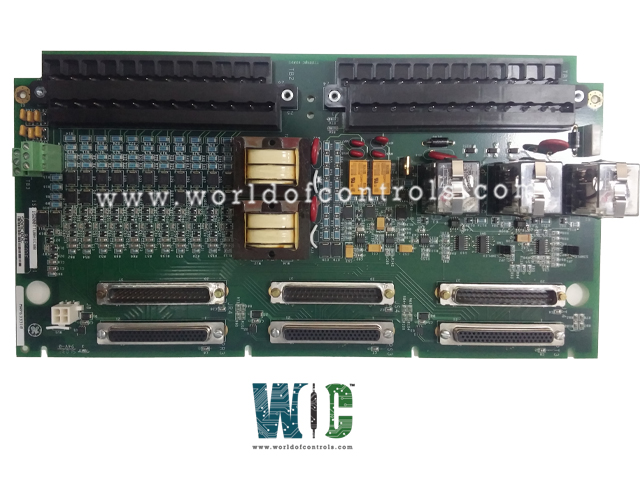
World Of Controls understands the criticality of your requirement and works towards reducing the lead time as much as possible.
IS200TTURH2C - Primary Turbine Protection Input Terminal Board is available in stock which ships the same day.
IS200TTURH2C - Primary Turbine Protection Input Terminal Board comes in UNUSED as well as REBUILT condition.
To avail our best deals for IS200TTURH2C - Primary Turbine Protection Input Terminal Board, contact us and we will get back to you within 24 hours.
SPECIFICATIONS:
Part Number: IS200TTURH2C
Manufacturer: General Electric
Series: Mark VI
Product Type: Primary Turbine Protection Input Terminal Board
Number of Channels: 24
Number of inputs: 12
Number of outputs: 125 V dc
Power supply voltage: 125 V dc
MPU Pulse Rate Range: 2 Hz to 20 kHz
Technology: Surface Mount
Common Mode Voltage Range: ±5 V
Dimensions: 33.0 cm high x 17.8 cm
Operating Temperature: 30 to 65°C
Repair: 3-7 Day
Availability: In Stock
Country of Origin: United States
Manual: GEH-6421M
FUNCTIONAL DESCRIPTION:
IS200TTURH2C is a Primary Turbine Protection Input Terminal Board manufactured and designed by General Electric as part of the Mark VI Series used in GE Speedtronic Turbine Control Systems. The Primary Turbine Protection Input (TTURH1B) terminal board works with VTUR and has the following inputs and outputs:
TTUR has three relays, K25, K25P, and K25A, that all have to close to provide 125 V dc power to close the main breaker, 52G. The speed signal cable to VTUR uses the JR5 connector, and the other signals use the JR1 connector. For TMR systems, signals fan out to the JR5, JS5, JT5, JR1, JS1, and JT1 connectors. In the Mark VI system, the TTUR works with the VTUR processor and supports simplex and TMR applications. In TMR systems, TTURH1B connects to three VTUR boards.
INSTALLATION:
Connect the wires for the magnetic pick-ups, shaft pick-ups, potential transformers, and breaker relays to the two I/O terminal blocks TB1 and TB2, as shown in the figure, TTUR Terminal Board Wiring. Each block is held down with two screws and has 24 terminals accepting up to #12 AWG wires. A shield termination strip attached to the chassis ground is located immediately to the left of each terminal block. Use jumpers JP1 and JP2 to select either SMX or TMR for relay drivers K25 and K25P. If used, connect the wires for optional TTL active speed pick-ups to TB3; these require an external power supply.
OPERATION:
In simplex applications, up to four pulse rate signals can be used to measure turbine speed. Generator and bus voltages are brought into TTUR for automatic synchronizing in conjunction with VTUR, the turbine controller, and the excitation system. TTUR has a permissive generator synchronizing relays and controls the main breaker relay coil, 52G. In TMR applications all inputs fan to the three control racks. Control signals coming into TTUR from R, S, and T are voted before they actuate permissive relays K25 and K25P. Relay K25A is controlled by the VPRO and TREG boards.
WOC has the largest stock of GE Speedtronic Control System Replacement Parts. We can also repair your faulty boards. WORLD OF CONTROLS can also supply unused and rebuilt backed-up with a warranty. Our team of experts is available round the clock to support your OEM needs. Our team of experts at WOC is happy to assist you with any of your automation requirements. For pricing and availability on any parts and repairs, kindly get in touch with our team by phone or email.
What is the primary turbine protection input terminal board?
The primary turbine protection input terminal board is a crucial component in turbine systems that serves as the interface between various protection devices and the turbine control system.
What is the function of the primary turbine protection input terminal board?
Its main function is to receive signals from various sensors and protection devices installed in the turbine system, such as temperature sensors, pressure transmitters, vibration sensors, etc. These signals are then processed and relayed to the turbine control system to ensure safe and efficient operation of the turbine.
What types of signals does the primary turbine protection input terminal board handle?
The board typically handles analog signals, such as voltage or current signals, from sensors and protection devices. These signals convey important parameters related to the operation and condition of the turbine, including temperature, pressure, vibration, speed, and more.